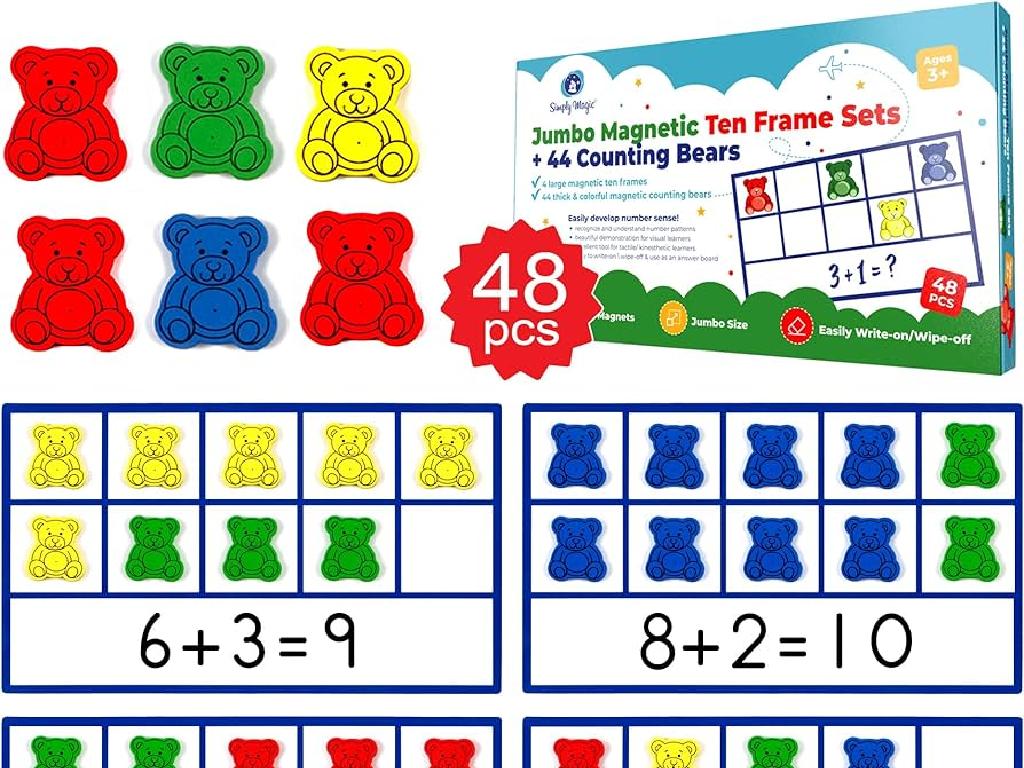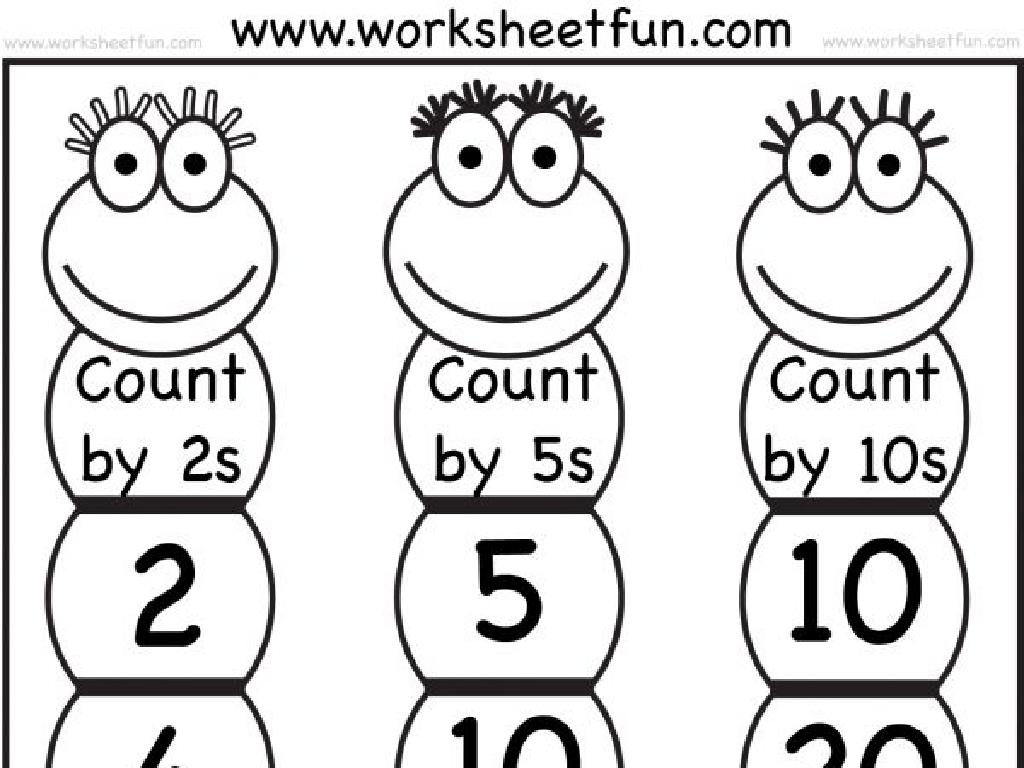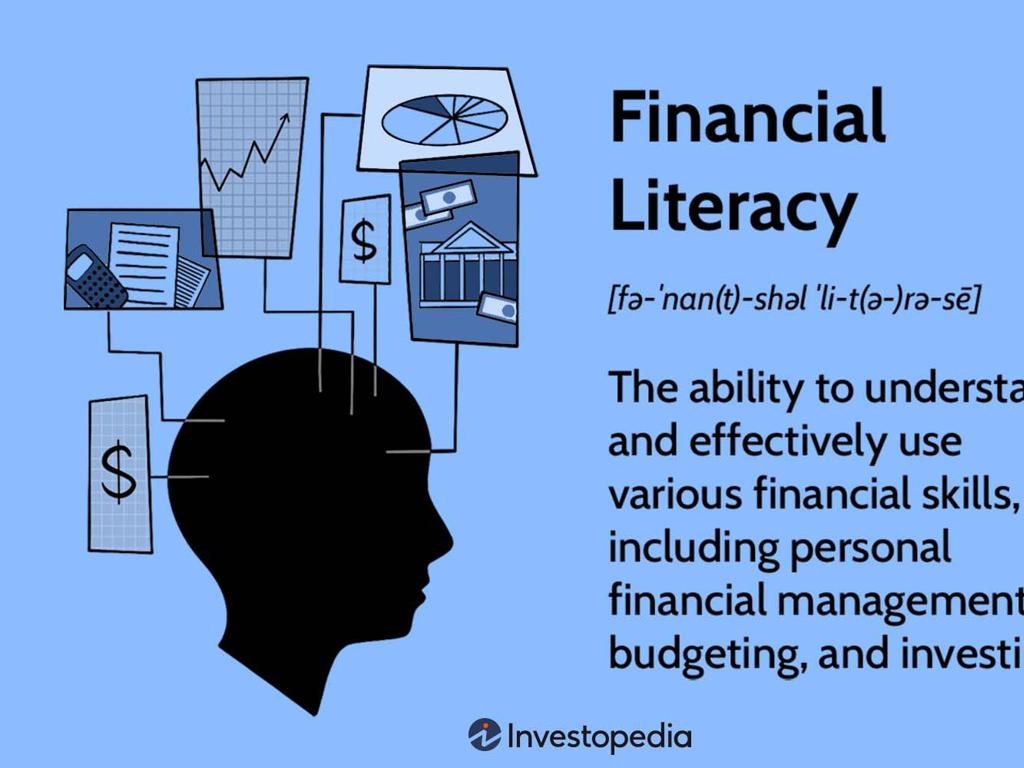Percents Of Numbers And Money Amounts
Subject: Math
Grade: Seventh grade
Topic: Percents
Please LOG IN to download the presentation. Access is available to registered users only.
View More Content
Welcome to Percents!
– Understanding the concept of percents
– Percents represent a part out of 100, like 50% is 50 out of 100
– Relating percents to fractions and decimals
– Every percent has a fraction and decimal equivalent, e.g., 50% = 1/2 = 0.5
– Applying percents in real-life scenarios
– Use percents for discounts, interest rates, and statistics
– Practice problems with percents
– Solve exercises involving finding percentages of numbers and money
|
This slide introduces students to the concept of percents and their importance in mathematics and everyday life. Begin by explaining that ‘percent’ means ‘per hundred’ and is a way to express fractions and decimals in a standardized form. Illustrate how to convert between percents, fractions, and decimals with examples. Discuss practical applications of percents, such as calculating sales tax, discounts on purchases, and interest rates on savings. Conclude with practice problems to reinforce the concepts taught. Encourage students to think of other areas where percents are used and to bring examples to the next class.
Understanding Percents
– Percent means ‘per hundred’
– Visualizing 1% on a grid
– 1% is one square in a 100 square grid
– Converting fractions to percents
– Divide the numerator by the denominator and multiply by 100
– Changing decimals to percents
– Multiply the decimal by 100 to get the percent
|
This slide introduces the concept of percents to seventh-grade students. Begin with the definition of percent as ‘per hundred,’ which lays the foundation for understanding how percents are a way to express fractions and decimals on a scale of 100. Use a visual representation of 1% on a 100 square grid to solidify this concept. Then, guide students through the process of converting fractions to percents by dividing the top number of the fraction (numerator) by the bottom number (denominator) and multiplying by 100. For decimals, show students how to convert to percents by simply multiplying by 100. Provide examples for each conversion to ensure comprehension. Encourage students to practice these conversions with various fractions and decimals to build their skills.
Calculating Percents of Numbers
– Understanding the percent formula
– Percent means ‘per hundred’, so the formula is part = percent * whole / 100
– Example: Calculating 25% of 200
– 25% of 200 is 25/100 * 200 = 50
– Practice: Find 10% of 50
– To find 10% of 50, calculate 10/100 * 50 = 5
|
This slide introduces students to the concept of calculating percentages of numbers, a fundamental skill in mathematics and real-world applications like finance. Start by explaining the percent formula, emphasizing that ‘percent’ means ‘per hundred’. Use the example of 25% of 200 to show how to apply the formula by multiplying the percentage (as a decimal) by the whole number. Then, give students a chance to practice with a simpler problem, finding 10% of 50, which reinforces the concept and builds confidence. Encourage students to work through the problem and understand each step. The empty fourth bullet point is intentional, leaving space for additional content or activities as needed.
Percents in Money: Calculating Sales Tax
– Understanding percent with money
– Example: 15% sales tax on $10
– To find 15% of $10, convert 15% to 0.15 and multiply by $10
– Practice: Calculate total with tax
– Given a price, add calculated tax to find total cost
– Real-world application of percents
|
This slide aims to teach students how to apply percentage calculations to real-life scenarios involving money, such as determining sales tax. Start by explaining that ‘percent’ means ‘per hundred’ and show how to convert a percentage to a decimal. Then, walk through the example of calculating a 15% sales tax on a $10 item by multiplying 10 by 0.15 to get $1.50, which is the tax amount. Add this to the original price to find the total cost. For the practice problem, provide a different item price and ask students to find the total cost including tax. Emphasize the practicality of this skill in everyday life, such as shopping and budgeting.
Percents: Beyond 100% and Below 1%
– Percents over 100 explained
– Percentages can exceed 100 when the amount is more than the whole.
– Percents under 1 explained
– Percentages less than 1 represent a very small part of a whole.
– Real-world examples
– Discounts greater than 100%, interest over time; fractions of a penny.
– Practice with problems
|
This slide introduces students to the concept of percents that are greater than 100% and less than 1%, which can be confusing at first. Explain that percents greater than 100% occur when the quantity is more than the total, such as in cases of interest accrued over time. For percents less than 1%, these are used when dealing with very small amounts, like the fractions of a penny in financial calculations. Provide real-world examples such as sales exceeding 100% of a target or a medicine’s concentration being less than 1%. Conclude with practice problems to solidify understanding, ensuring to include a variety of scenarios to cover both concepts thoroughly.
Discounts and Interest Rates
– Calculating product discounts
– Subtract the discount percentage from 100%, then multiply by the original price.
– Understanding simple interest
– Interest added to the principal of a deposit or loan without compounding.
– Practice: Discount & final price
– If a $50 item is 20% off, what’s the discount and final price?
– Real-world applications
|
This slide introduces students to the concepts of calculating discounts and understanding simple interest, which are practical applications of percents in everyday life. Start by explaining how to calculate the discount by finding the percentage of the original price and subtracting it from the original price to get the sale price. Then, discuss simple interest as a percentage of the principal amount over a certain period of time. Provide a practice problem for students to apply what they’ve learned about discounts. Emphasize the importance of these skills in managing personal finances, such as saving money while shopping and understanding how interest works on savings accounts.
Class Activity: Percent Scavenger Hunt
– Find items with percent labels
– Calculate discounts on items
– Use the original price and percent off to find the sale price
– Determine added sales tax
– Apply the tax rate to the sale price to find the total cost
– Present findings to class
|
This interactive class activity is designed to help students apply their knowledge of percents in a practical context. Students will search for items around the classroom that have percent-based labels, such as discounts or nutritional information. They will then use their math skills to calculate the discounted price of these items, taking into account a given sales tax rate. Finally, students will present their findings to the class, explaining their process and results. For the teacher: Prepare labels with different percentages in advance and place them on classroom items. Provide students with a mock sales tax rate. Encourage students to explain their mathematical reasoning during presentations. Possible variations of the activity could include calculating interest rates, determining percent increase or decrease, or comparing discounts from different items to determine the best deal.
Wrapping Up: Percents of Numbers & Money
– Review of percent calculations
– Homework: Percent worksheet
– Complete problems on finding percents of various numbers and money amounts.
– Emphasize consistent practice
– Regular practice is key to mastering percents.
– Encourage questions and exploration
– Seek help if concepts are unclear; explore real-world applications.
|
As we conclude today’s lesson on percents, remind students of the key concepts covered. For homework, they should complete the provided worksheet which includes a variety of problems to reinforce their understanding of calculating percents in the context of numbers and money. Emphasize the importance of consistent practice to become proficient in this skill. Encourage students to ask questions if they encounter difficulties and to explore how percents apply to real-life situations, such as discounts, sales tax, and financial literacy. This will help solidify their learning and see the relevance of percents in everyday life.






